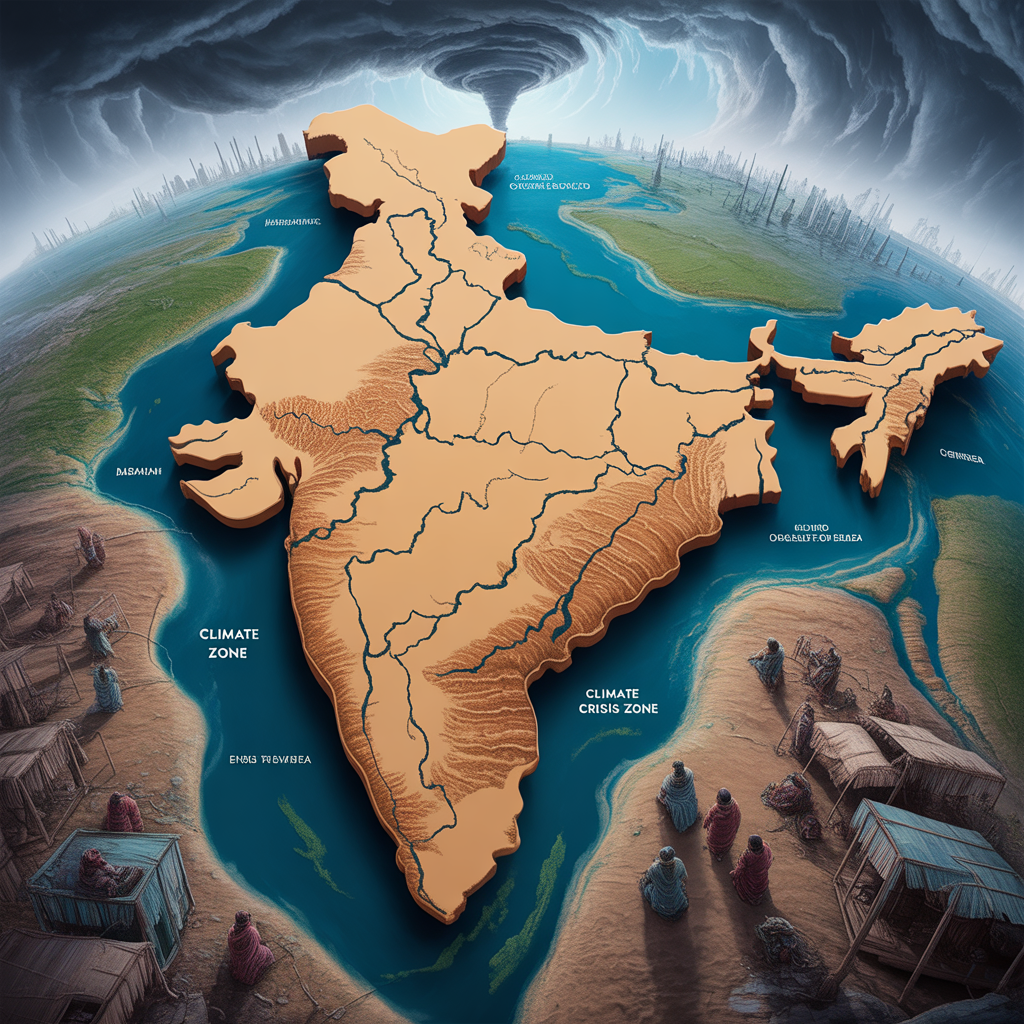Groundwater extraction Earth’s axis shift: Study finds 31.5-inch movement
A new study reveals that groundwater extraction axis shift caused Earth’s rotational axis to move by 31.5 inches between 1993 and 2010. The research, published in Geophysical Research Letters, links excessive pumping of underground water to this unusual movement of the planet’s rotational axis.
Groundwater Loss Caused the Axis Drift
Over 17 years, humans extracted an estimated 2,150 gigatonnes of groundwater from beneath the Earth’s surface. This water eventually reached the oceans. The redistribution of mass changed the planet’s balance and caused a steady eastward drift of the rotational pole.
The axis moved at an average rate of 4.36 centimetres per year. Researchers used satellite data and telescope readings to track this shift. The models they used only matched real-world observations when they included groundwater depletion.
Dr. Ki-Weon Seo from Seoul National University, who led the study, said, “Including groundwater extraction helped our model accurately reflect the observed polar motion.”
India Among the Hardest-Hit Regions

The biggest changes occurred in areas with high groundwater use. These include northwestern India, parts of the western United States, and the Middle East. In India, over 60% of irrigation depends on groundwater. The growing demand for water in agriculture has placed enormous pressure on aquifers.
According to the study, groundwater loss added around 6 millimetres to global sea-level rise between 1993 and 2010. That accounts for nearly 10% of the total sea-level increase during that time.
Why Earth’s Axis Matters
The Earth’s axis is an imaginary line running through the North and South Poles around which the planet spins. Its position affects the planet’s rotation, and, indirectly, climate and weather patterns. While natural movements of the axis occur due to factors such as melting glaciers, mantle convection, and Earth’s internal dynamics, the recent steady eastward shift stands out because of its connection to human activity.
Normally, shifts in the Earth’s axis happen over thousands or millions of years. The fact that a nearly one-metre shift occurred within just two decades signals the growing influence of human actions on geological processes.
Axis Shift Is Measurable but Harmless
Earth’s rotational axis shifts naturally due to changes in its internal structure and climate cycles. However, this human-caused movement is unusual. Scientists stress that the 31.5-inch shift does not affect the weather, climate, or seasons.
Dr. Surendra Adhikari from NASA’s Jet Propulsion Laboratory explained, “The shift is small. It won’t change how we live. But it proves that human activities can affect planetary systems.”
This reassurance is important as some might fear such shifts could disrupt navigation systems, climate stability, or day length. In reality, the effect is too small to cause such consequences.
How Groundwater Depletion Triggers Axis Shift
Groundwater extraction involves pumping water stored underground for irrigation, industry, and drinking. When people extract water faster than aquifers replenish, the lost water flows into oceans or evaporates, redistributing mass on Earth’s surface.
This mass redistribution causes changes in Earth’s moment of inertia—the way its mass is spread out around its axis. Just like a spinning figure skater who changes speed by adjusting their arms, the planet’s rotation axis shifts in response to this altered mass distribution.
The research team used satellite gravity measurements from NASA’s GRACE mission to measure how much groundwater was lost and where it was lost most. Their analysis showed a clear correlation between regions with heavy groundwater pumping and the axis movement.
Regional Hotspots of Groundwater Loss
India is a significant hotspot for groundwater depletion. The Central Ground Water Board (CGWB) has reported that more than 250 districts across India face groundwater stress. Punjab, Haryana, Rajasthan, and parts of Uttar Pradesh are among the worst affected.
In these regions, groundwater extraction far exceeds natural recharge rates, mostly due to extensive irrigation for crops like rice and wheat. This has caused water tables to drop drastically, forcing deeper wells and raising pumping costs.
The western United States, especially California’s Central Valley, also experiences heavy groundwater use, largely driven by agriculture. Similarly, parts of the Middle East rely heavily on underground water due to scarce surface water resources.
Sea Level Rise Connection
Groundwater depletion contributes to rising sea levels when extracted water eventually drains into oceans. The study estimates this process caused roughly 6 millimetres of sea-level rise from 1993 to 2010, representing about 10% of the total rise during that period. (IPCC report on sea level rise)
This contribution is significant as sea-level rise threatens low-lying coastal areas worldwide, increasing flooding risk and saltwater intrusion into freshwater supplies.
The Broader Environmental Impact
The study highlights the complex relationship between human water use and Earth’s physical systems. While the axis shift itself is minor, the underlying cause—unsustainable groundwater pumping—raises serious environmental concerns.
Water scarcity affects food security, economic stability, and ecosystem health. Over-extraction can lead to land subsidence, reduced water quality, and the loss of surface water bodies.
Experts warn that if current trends continue, the depletion of groundwater could accelerate, causing further measurable effects on Earth’s rotation and global sea levels.
Calls for Sustainable Water Management
This discovery adds urgency to global efforts aimed at sustainable groundwater management. Policymakers and water managers are encouraged to implement strategies such as:
- Rainwater harvesting and recharge
- Promoting drought-resistant and less water-intensive crops
- Improving irrigation efficiency
- Regulating groundwater extraction through monitoring and enforcement
In India, several states have begun initiatives to encourage water conservation, but many experts say more robust nationwide policies are required.
Dr. Seo noted, “Tracking groundwater loss through Earth’s axis movement could become a powerful new tool to support water management decisions.”
A Global Wake-Up Call

This study serves as a reminder of the unintended consequences of human activities. The Earth’s physical systems are interconnected, and excessive use of one resource can affect planetary behavior in surprising ways.
“Our behaviour affects how the planet spins. That’s a powerful reminder of our global impact,” said Dr. Seo. (NASA Jet Propulsion Laboratory)
Experts hope this research will prompt governments, scientists, and citizens worldwide to rethink water use and protect vital underground reserves before irreversible damage occurs.




